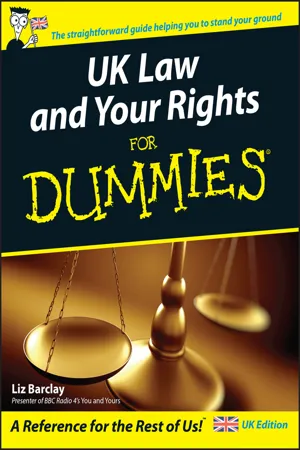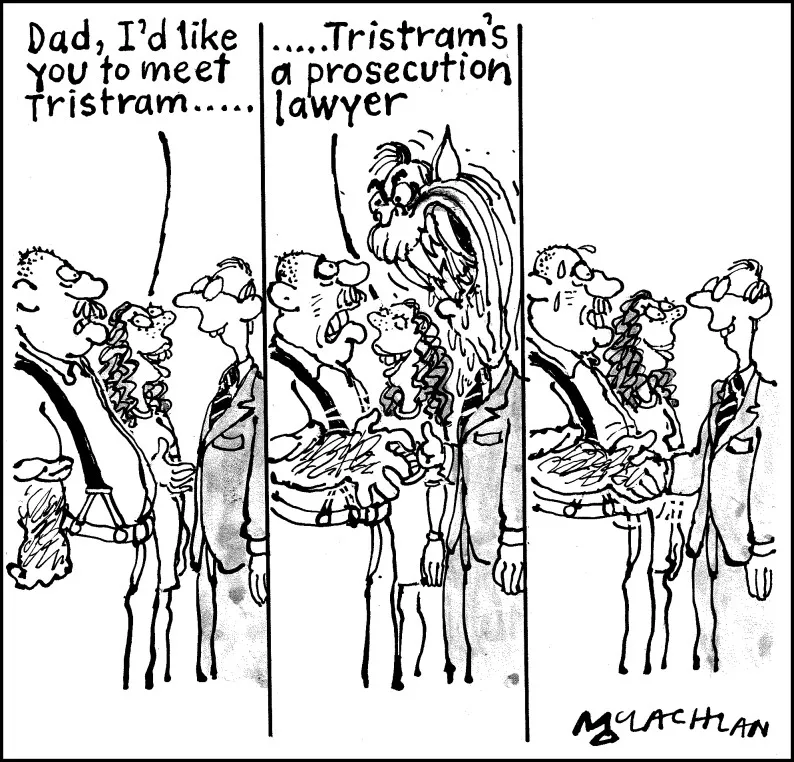The legal system is multilayered. Laws come from two different sources – the UK and Europe. But no piece of legislation is clear-cut, and each law can often be interpreted in more than one way. That’s why the courts play a role in helping citizens understand what the legislation was meant to mean. This section gives you an idea of how UK laws come into force.
Legal differences throughout the UK
England and Wales share a legal system – the same court structure and the same laws. However, since the establishment of the Welsh Assembly, Wales does have limited powers to make some of its own laws, which is why some law or policy differences may exist. For example, prescription charges for medicines are different in Wales.
Northern Ireland also has an Assembly, but due to political disagreements, it’s often suspended, and so government reverts to Westminster. As a result, Northern Ireland and England have some differences between laws – for example, in Northern Ireland, you have to be married for two years before you can apply for divorce, whereas in the rest of the UK it’s only one year, and the High Court in Northern Ireland deals with divorce instead of the country court. (For more information on the Northern Ireland system, visit www.direct.gov.uk.)
Scotland has its own parliament, consisting of Scottish MPs who can pass legislation for Scotland. The education system is different in Scotland, and University students there don’t have to pay fees. In addition, the rules on paying for long-term care for elderly people, and the house buying and legal systems are substantially different. (You can find more information on the Scottish legal system at www.scotland.gov.uk.)
Constitution, Acts of Parliaments, and common law
The UK has no constitution in the sense that no one document sets out the powers of the Government. The Parliament Acts of 1911 and 1949 set out the powers of the Houses of Commons and Lords. The House of Commons is the chamber of Parliament where elected MPs sit and debate; the House of Lords is where the Peers influence the law-making process and is the highest court in the UK. The European Communities Act makes the UK part of the European Community – the European Union of 25 member countries – with all the legal implication that entails.
The Government uses its powers to draw up legislation. At the beginning of each parliamentary year, the Queen gives a speech in which she outlines the laws the Government wants to make or change during that year. Parliament then debates each bill drawn up.
Parliament includes members of the House of Commons and the House of Lords. MPs in the Commons debate each bill at several readings and ask for amendments before the bill is presented in its final form for voting on whether it should become law. If Parliament passes the bill, it then goes to the House of Lords for approval. If the MPs vote to pass a piece of legislation but the Lords reject it, it goes back to the House of Commons for MPs to look at it again, but ultimately, the Lords can’t stop the Commons from passing a bill. Eventually, the legislation is either rejected because too many MPs vote against it, or it’s passed and becomes law.
At the time of writing, the Government has drafted an Animal Welfare Bill, which, amongst other things, if passed, raises the age at which a child can buy a pet from 12 to 16 and makes it illegal to dock dogs’ tails. If the legislation becomes law, it will become the Animal Welfare Act and be dated with the year it passed. It will then be an Act of Parliament.
The Queen has to approve each Act of Parliament – it’s given Royal Assent – and then it becomes law. The Government, which came up with the proposals in the first place, then has to put the law into use. The Government is different from Parliament. The elected MPs who are appointed by the Prime Minister to act as cabinet ministers, their government departments (such as the Department of Health), local authorities such as the members of a City Council, and civil servants are the Government. Not only does the Government have to make the laws and put them into practice, it also has to abide by them.
Acts of Parliament also give government ministers the power to make changes through what’s called secondary legislation or statutory instruments, which are usually used to make minor changes and go through a much less rigorous process before becoming law.
The problem with most pieces of legislation is that you can interpret the many clauses in multiple ways. That’s where the courts come into the equation. Judges interpret the law, and their decisions build up into a body of case law, known as common law. Judges are independent of Parliament. They can’t decide that legislation passed by Parliament is unlawful, although they can, in some cases, overrule statutory instruments. Judges, however, can decide that the Government has broken its own laws and can preside over cases taken against the Government.
As an example, take the law on discrimination. If someone makes a claim against someone else, for discrimination on the grounds of disability, solicitors, appointed to act for each side, try to reach a settlement. Each solicitor is arguing that his client is in the right. If a settlement isn’t reached and the case goes to court, each side has a barrister, or an advocate in Scotland, representing them. Each barrister prepares an argument that supports her client, and the judge then decides who is right and who is wrong. In certain types of cases, the decision then influences the outcome of other similar cases. That’s common law.
The lower courts are bound by decisions made in higher courts. These decisions set precedents. The House o...







